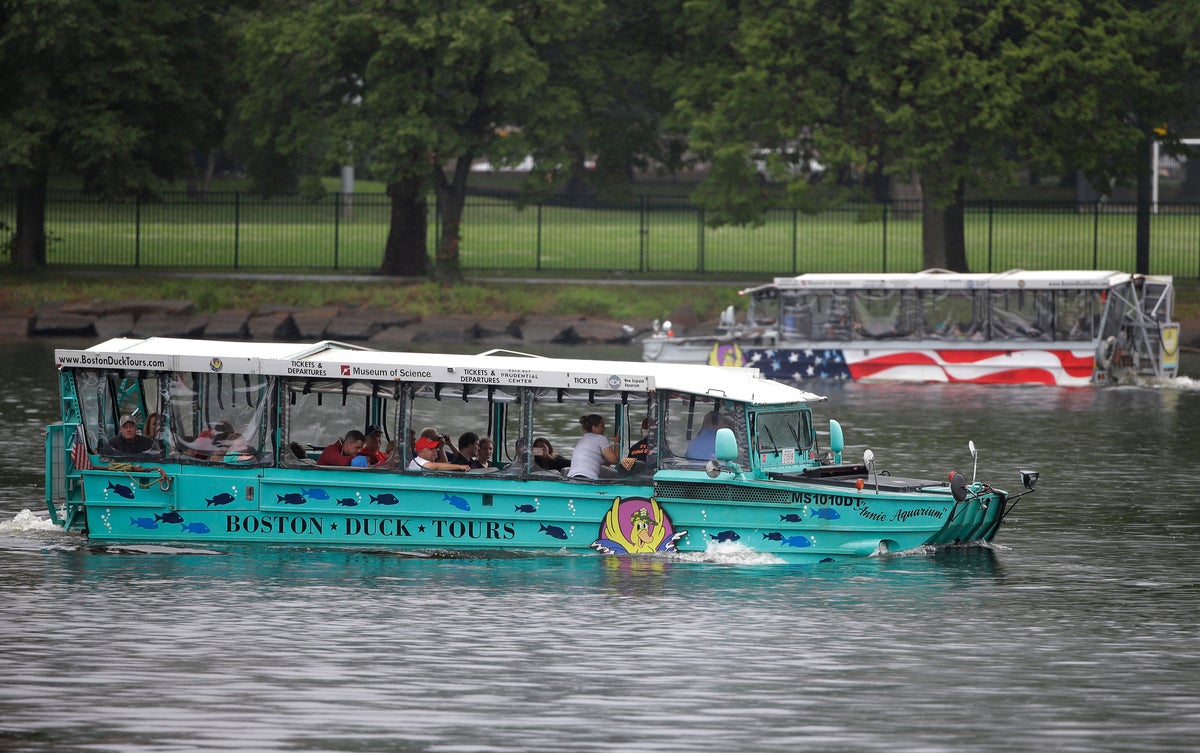
Five years after 17 people died when a duck boat sank on a Missouri lake, the U.S. Coast Guard has issued new rules for the amphibious World War II vessels retrofitted for tourist excursions.
But the new rules have limited impact: Only 16 applicable vessels are still in use.
The interim rules posted Monday require removal of window coverings and canopies, or installation of a canopy that doesn’t keep passengers from escaping if the boat floods or sinks. The Missouri vessel, and an Arkansas duck boat that sank in 1999, killing 13 people, had overhead roofs or canopies that the National Transportation Safety Board warned could greatly increase the risk of passengers becoming trapped and drowning.
The new rules also include requirements for passengers to wear personal flotation devices, requirements for alarms and pumps, and they strengthen inspection regulations.
The rules apply only to repurposed World War II-era Army vessels now used for land-and-water tours — not newer vehicles built specifically for tourist trips. The 16 older vessels in use are operated by three companies, the rules document states. The Coast Guard didn't say where those boats are, but 10 are part of one Arkansas fleet.
Duck boats have been involved in more than 40 fatal accidents since 1999. Among their critics is Jim Hall, a former NTSB chairman. He said the new set of rules is a good step, but long overdue.
“The significance of it, unfortunately, is lost in the years it has taken for it to be produced,” Hall said.
Branson Ride the Ducks was a popular attraction in the Missouri tourism town. Though the weather was calm when the vehicle began its trip on July 19, 2018, forecasters had warned of an impending storm.
Video and audio from the boat, recovered by divers, showed that the lake was calm when the vessel entered the water. But a massive storm blew in, and within minutes, the boat sank. The 17 victims included nine members of one Indiana family.
The wind speed at the time of the accident was more than 70 mph (113 kph), just short of hurricane force, an NTSB investigation determined.
The vessel's captain and two business managers were charged with several felony counts, including manslaughter. Those cases have not gone to trial.
Fallout from the accident reverberated. Insurance costs rose sharply for operators. Duck boat rides ceased in Pittsburgh, Seattle and other places.
Branson Ride the Ducks never reopened after the accident, and there are no plans to resume, said Suzanne Smagala-Potts, spokesperson for Ripley Entertainment, which operated the attraction. The company has settled 31 lawsuits.
A new duck boat attraction opened in Branson in 2022, but with vessels “custom-built for tourism, that have a great safety record,” according to a statement from the operator, Branson Duck Tours.
Ten of the 16 remaining World War II-era vessels in operation are part of National Park Duck Tours in Hot Springs, Arkansas, which takes about 100,000 visitors each year on a tour of the historic downtown and a water ride around islands in Lake Hamilton. Operator Stacy Roberts said that in 31 years on the water, his vessels have never had an accident.
Roberts estimated it will cost about $10,000 per vessel to make modifications required by the new rules.
“I don't have any problem meeting the new regulations," Roberts said. “But my vessels are safe as they are.”
Roberts said safety of his fleet was scrutinized and upgraded after a competitor's duck boat sank in 1999, killing 13 people. The NTSB blamed inadequate maintenance and determined that the vessel built by the Army in 1944 wasn’t designed for passenger service.







